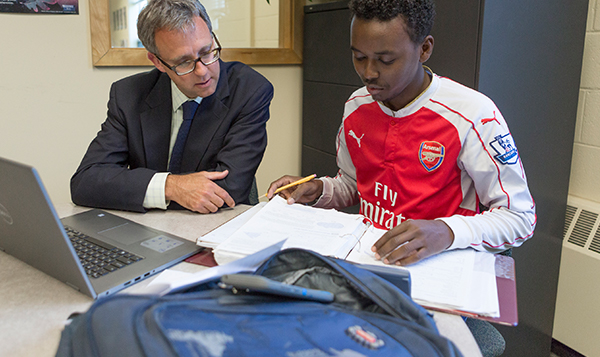After you have applied for financial aid and completed the verification process, if selected for it, the schools you have been accepted to will notify you of your financial aid offer. Some schools will send you a paper letter while others will send you an email notification directing you to the school’s online system. Many schools begin sending financial aid offers around the first of the year.
Understanding Financial Aid Offers
Congratulations! You’ve received a financial aid offer from your school! If you applied to multiple schools, maybe you’ve received several offers of financial aid. In this video, we will talk about how to interpret your financial aid offers and the types of aid you may see as part of the offer.
Review and Compare Financial Aid Offers
There is no standard format for financial aid offers, making it difficult to compare offers from different schools. Use FAME’s Comparing Costs and Financial Aid Offers Worksheet to help you compare different offers. (Please note: not all browsers/versions support PDF forms. For best results, download the worksheet and open with Adobe Reader, available as a free download from Adobe.com.) Want to print the worksheet? Download and print this file.
Review Each Offer
Review your offer, including the types of financial aid that are listed, which may include:
- Grants and scholarships are gift aid that you will not need to repay.
- Work-study is aid you receive for working on or sometimes off campus. Work-study aid is typically used to pay for books, travel, and miscellaneous expenses.
- Loans are aid that you borrow and will need to repay. Learn more about student loans.
Learn more about financial aid basics.
Compare Each Offer
- First, calculate the net price – the cost of the school after grants and scholarships – for each school to get a more accurate comparison of your cost.
- Next, review the federal student loans you have been offered. Exclude Parent PLUS and alternative or private loans in your comparisons. These loans are available at most schools, but many schools choose not to list them as part of the initial financial aid offer, in part because these loans require a credit review process and lender approval.
- Work-study offers are typically excluded from this comparison, as they aren’t available at the time the bill is due, but are earned throughout the year.
Questions to Ask About Each Offer
- Is the financial aid offer likely to stay the same for all years you attend (assuming your financial information doesn’t change dramatically)?
- Are there GPA requirements to maintain any of the types of aid?
- How will outside scholarships impact the financial aid offer?
When the Financial Aid Offer Isn’t Enough
Schools aren’t always able to meet the full financial need of every student. However, there may be ways to make your financial aid offer stretch further or to have your financial aid offer reevaluated.
Reduce Your Expenses
There are a variety of costs associated with going to school. Review your costs to see if any of your expenses can be reduced or eliminated. Even small savings or adjustments to your plan can make a big difference.
Reduce Your Enrollment Costs
- Test out of college courses by taking Advanced Placement (AP) classes in high school.
- Take courses and earn credits from your local college or online.
- If your school has a flat tuition rate, take extra classes to finish your degree sooner at no extra cost.
- See if you’re eligible for reduced tuition at an out-of-state school. Some state university systems have agreements with neighboring state university systems to offer reduced tuition rates. Learn more about NEBHE’s Tuition Break program.
Reduce Your Living Expenses
- Consider living at home, if possible, and commuting to college.
- Get roommates if you decide to live off campus. If you live on campus, skip the single room.
- Choose a meal plan that works for you, to avoid paying for more than you’ll actually eat. More importantly, if you have a meal plan, use it! Eating out when you have a meal plan is like paying for that meal twice.
Reduce Your Travel Expenses
- Leave your car at home to save on parking fees and gas.
- Consider commuting with another student or use public transportation.
- Take advantage of student discounts on car insurance and travel.
Spend Less on Books and Supplies
- Use free resources like Google Books and your school library.
- Consider renting from a source like Chegg.com or your school bookstore, or share a book with a student taking the same class as you.
- Buy your books used and purchase them early.
- Go green by purchasing digital books. Downloadable textbooks are often cheaper than hard copies and are delivered on demand.
- Earn cash back by selling books you’ll never use again to classmates, your school bookstore, and online stores like Chegg.com or Amazon.com.
- When purchasing a laptop, see if you can buy a used or refurbished one. Look into student discounts, which may be available through your school.
- Before investing in any computer software for your laptop, check with your school’s computer help desk. Some schools have an inventory of software available for a reduced cost to current students.
Review Your Financial Situation
Sometimes families have special circumstances that are not reflected on the FAFSA or experience a change in their situation after the FAFSA has been filed. If you or your family have special circumstances that impact the ability to pay for college, it is important to follow up with the financial aid office to see if your financial aid offer can be reevaluated.
Below are some common special circumstances that should be discussed with a financial aid office:
- Loss of employment
- Divorce or separation
- Death or disability of a parent
- Loss of child support or alimony
- Unusual medical expenses
- Parent(s) attending college
- Elder care expenses
- Any financial changes not reflected on the FAFSA
If you have any of these special circumstances, the next step is to appeal your financial aid offer.
Appeal Your Financial Aid Offer
When it comes to appealing a financial aid offer, students and families should plan to discuss their circumstances openly, even when it is difficult, and work together with the financial aid office to find solutions. Here are the steps to take to appeal a financial aid offer.
Step 1: Evaluate Your Financial Situation
What situation is impacting your ability to pay for school? Though you can simply ask for more money, most of the time you will need to identify a “special circumstance” or change in the situation to be considered for more financial aid.
Determine how much you (the family) can contribute (“here’s what we can do”) and how much more is needed. Wait to see what the school is able to offer, but it is helpful to have an amount in mind in case they ask how much you need.
Step 2: Contact the Financial Aid Office to Ask About the Appeal Process
Provide a quick overview of your situation. If a specific form is required, ask how to obtain the form. Also, ask for the appeal response time once it is submitted. If you call, be sure to make a note of when you called and the name of the person you spoke with on the phone.
You can use a free online service called SwiftStudent that will help you write your appeal letter. This website will guide you through your circumstances and pre-fill an appeal letter to send to your college’s financial aid office. This is a free and easy-to-use service.
Step 3: Complete Required Forms and/or Write an Appeal Letter
It is helpful to write a letter, even if a standard form is required.
- Summarize the situation and the impact on the family.
- Emphasize when the special circumstance was beyond the family’s control.
- Include documentation of the situation; letters and documentation are kept confidential in the student’s file.
- Provide contact information in case the financial aid office has follow-up questions.
- Keep the letter concise – no more than a page or two.
Step 4: Thank the Financial Aid Office for Considering the Appeal
The decision of whether or not to make adjustments is ultimately up to the financial aid administrator. However your appeal is handled, make a good impression with a thank you. You never know if more assistance might become available in the future.





